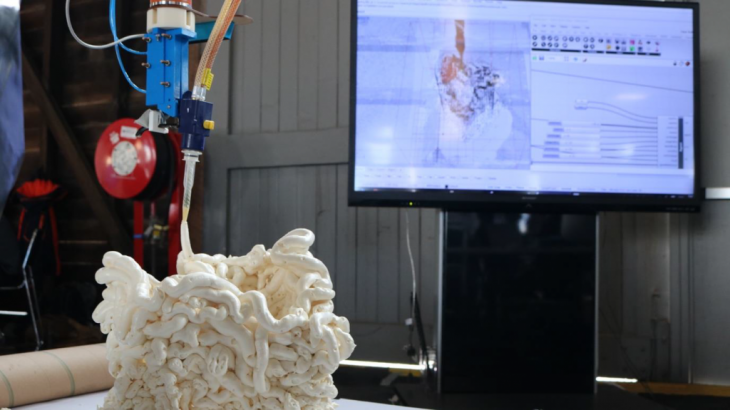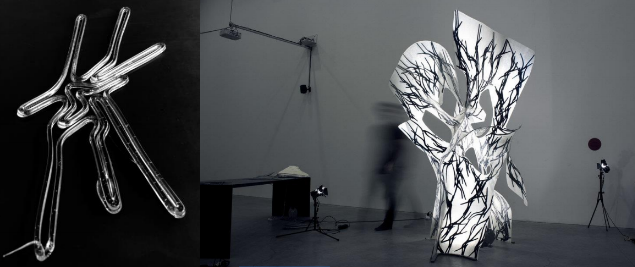IAAC – Master in Robotics and Advanced Construction
Workshop 3A
–
Faculty: Roland Snooks
Faculty Assistants: Natalie Alima, Kunaljit Chadha
Industry collaborators: KUKA, WASP, FOLOGRAM
University collaborators: RMIT
ROBOTIC AND MIXED REALITY
Syllabus
This workshop will explore the interrelationship between real-time robotics, augmented reality, material behavior and self-organising generative models. This methodology involves a feedback between these operations in order to create a real-time and non-linear relationship. This approach enables material, computational, physical and human agency to all mutually interact in the generation of form and tectonics creating a constant adaptation of form through real time robotic generative feedback. More specifically the workshop will focus on generating and building an agentBody structure through polymer 3D printing, AR assembly and multi-agent generative algorithms.
 Roland Snooks – agentBody lattice (from Aalto University project)
Roland Snooks – agentBody lattice (from Aalto University project)
In order to showcase the machine’s ability to co-create with human intervention, students will utilise the Hololens in order to assemble each component. Through this process of augmented construction reality, students will be physically selecting and assembling each individual component and feeding this information back to the computational form. Resulting from these physical changes, the computational form will be constantly evolving and adapting due to real time feedback. Therefore, students will be experimenting with computational forms that are in constant dialogue with the physical environment.
To realise areas which are in need of additional structural support, students will be simultaneously 3D scanning this flexible inner framework. Utilising a Kinect, this real time data will trigger the robot to directly respond by fabricating an additional layer of material over the required area.
As a result, this additional layer will inform the external skeleton over the malleable inertial lattice structure. By performing the design and fabrication process as a single operation, there will no longer a distinction between physical and digital realities.
Therefore, this workshop will focus on incorporating this fusion of robotic techniques into the design process resulting in a new set of design implications and architectural tectonics. Students will initially be introduced to each of these core processes before working collectively on the fabrication of a single large prototype (similar in ambition to the Composite Swarm project):
 Roland Snooks and Gwyllim Jahn – Stigmergic Accretions RobArch 2016 – real-time robotics
Roland Snooks and Gwyllim Jahn – Stigmergic Accretions RobArch 2016 – real-time robotics
The specific technical workflow will involve an agentBody computational model (C# kokkugiaAgent Library within GH) which can be interacted with through the Hololens (via Fologram). Computational agentBodies will be selected through this AR interface to be robotically fabricated on-demand being printed in a flexible polymer agentBody (FDM printed via a UR10 or WASP 3MT – large extrusion diameter from pellets).
The printed agentBody is then assembled with the aid of the holographic model. The deformation of the flexible agentBody is recorded via 3D scanning (Hololens and Kinect) and enables the agent-based model to respond and reform in real-time before the next agentBody is selected and printed. The final step in the process is the in-situ reinforcement of this flexible structure with rigid polymer printed by the robot (UR10) directly onto the flexible structure.
